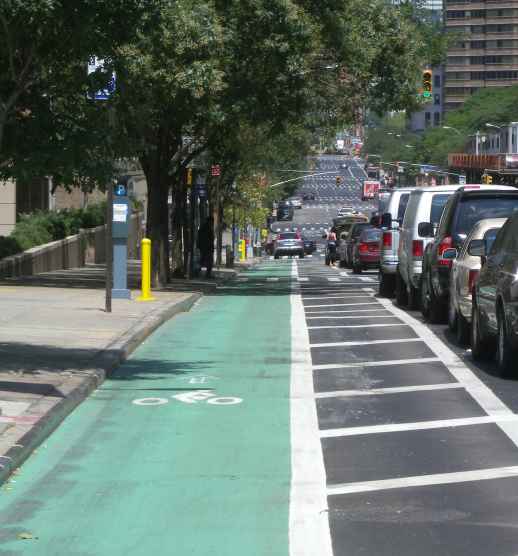
Many people are afraid to ride a bicycle in traffic for fear of getting into an accident with a car. This fear immobilizes them and it prevents them from using a bike for transportation.
Such fear is not entirely unfounded. Cyclists get into accidents on a regular basis. Sometimes these accidents result from debris, potholes or otherwise broken roads. Other times, accidents are the result of unexpected events like a pedestrian walking off of the curb unexpectedly or an oblivious motorist throwing open a car door.
Events of this type frighten would-be cyclists, but not as much as an encounter with a car. Falling is one thing, but getting hit by a rolling box of steel, weighing several tons, is enough to intimidate anyone.
Just imagining a run-in with a car can give a cyclist chills. Being struck by something that big would have to hurt. And an object of that size could easily kill someone. This is why so many people see road cycling as something only crazy people do. And, they might be right.
Riding in traffic carries risks. Although It doesn’t have to be this way, it is. It’s a risk because the burden of safety rests squarely on the shoulders of cyclists.
Cyclists are expected to equip themselves and their bicycles to make themselves safe. A helmet is seen by the public as evidence of a safety conscious cyclist. Front and rear lights are also regarded as accouterments of safe cycling.
Better yet, cyclists are expected to wear screaming yellow clothes or reflective gear to make it easier for motorists to see them. While it’s true that wearing dark clothes makes it harder for a motorist to notice a cyclist, it’s equally true that half of the burden of safety should rest on the driver.
In reality, almost none of the burden rests on the driver. On a personal level, the majority of drivers don’t want to mow down a cyclist. There’s no feeling like having someone’s blood on your hands, or on your bumper, in this case.
An experience of that type would eat away at the average person, even if they didn’t think the accident was their fault. But guilt and remorse are never enough to bring back a cyclist from the dead, or give him back his life if he sustains serious injuries. That’s where driver responsibility for cyclist safety comes in.
Drivers are released from many normal obligations when they get behind the wheel. Killing someone with your car is usually forgiven, unless it can be proven that you’ve acted with malice, which is difficult to prove.
This is why so many drivers get away with killing cyclists. Nearly everything a driver does is referred to as “operator error.” It’s an error, an accident, something beyond the driver’s control — at least according to the authorities.
Tagging such behaviors as accidental is probably nothing more than an act of self-preservation. Any driver can make a mistake. So when it comes to injuring another person, especially a cyclist or pedestrian, no one wants to believe it could happen to them. And if it did happen to them, they wouldn’t want to suffer any serious penalties.
Ultimately, it’s a question of letting others off the hook so that if you should find yourself in the hot seat, you won’t be held accountable either. A mindset of this type allows large numbers of people to drive cars without fear of being held accountable should they injure or kill someone.
Further, the burden of cyclist safety should be shared by society. It’s not simply a question of drivers or cyclists taking steps to make cyclists safer. It’s something that should be done for the public good.
To make cycling as transportation a reality, without unduly burdening cyclists, roads must be redesigned with cyclist safety in mind. Separating bicycles and cars, whenever possible, is better than leaving it up to drivers and cyclists to interact with one another in safe ways.
The majority of drivers would prefer this approach because it relieves them of the responsibility of watching out for cyclists. Reluctant cyclists would also prefer this because they feel safer riding away from cars.
What it comes down to is recognizing that cyclist safety is a shared responsibility. Cyclists, drivers and society owe it to one another to collaborate on making cyclists safe.
This will be a slow painstaking process due to the long history of excluding bicycles from road planning. Yet, for everyone’s sake, it will be worth it, even if motorists don’t see any benefit now. A long-term view is necessary.
In the interim, there will be a push to hold motorists accountable for any harm they cause to cyclists. Naturally, motorists will want to push back. By agreeing to fund separate facilities for cyclists, drivers will reduce their risk of being held accountable. So it will be a win-win situation, and a major improvement over what we have now.



